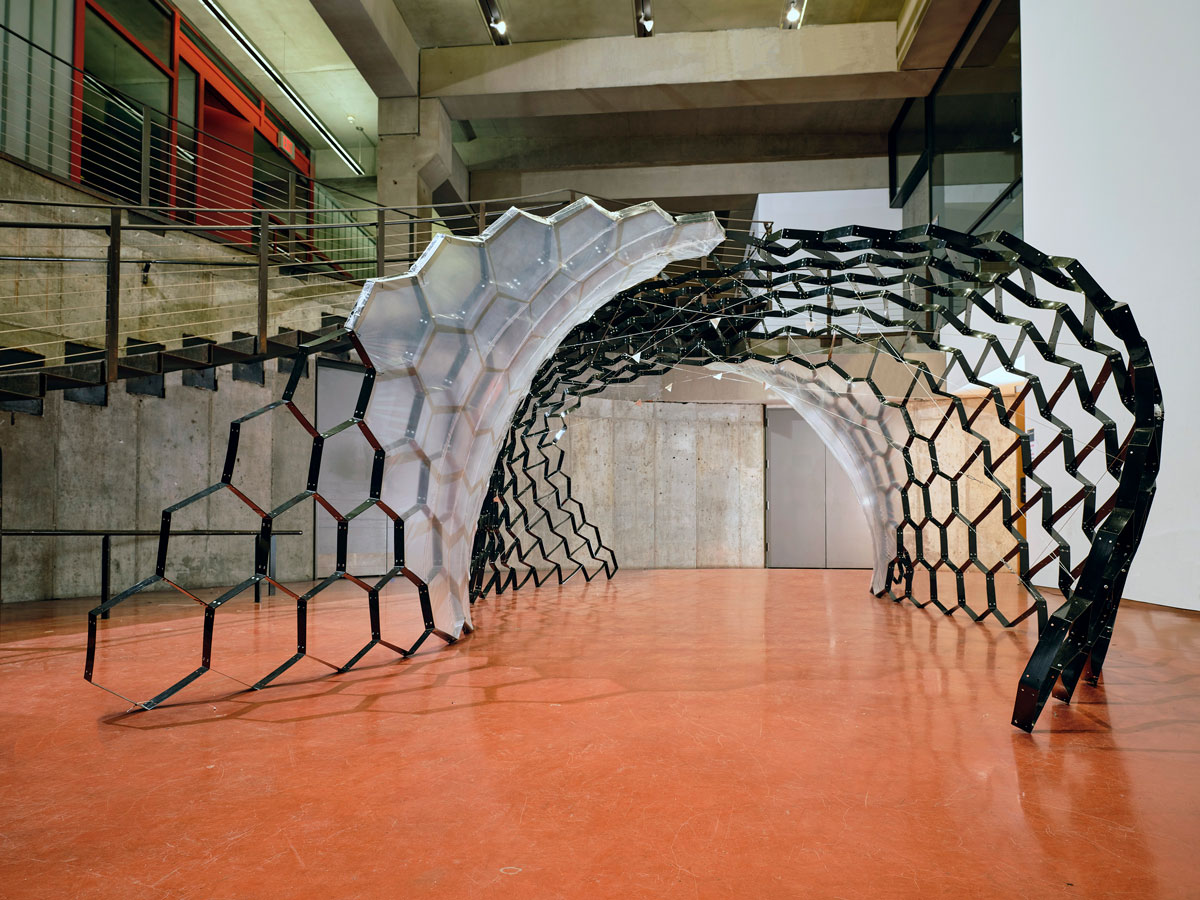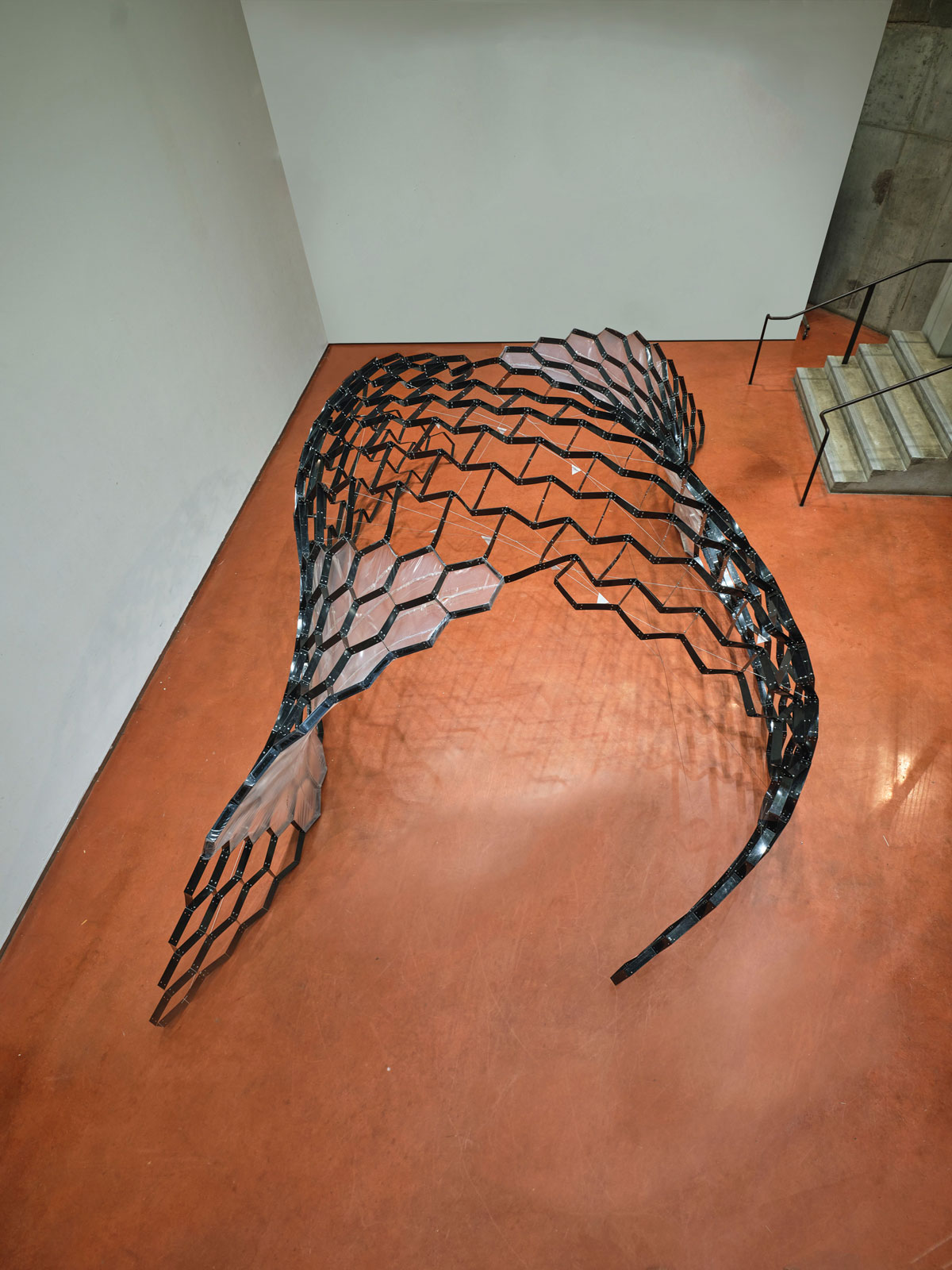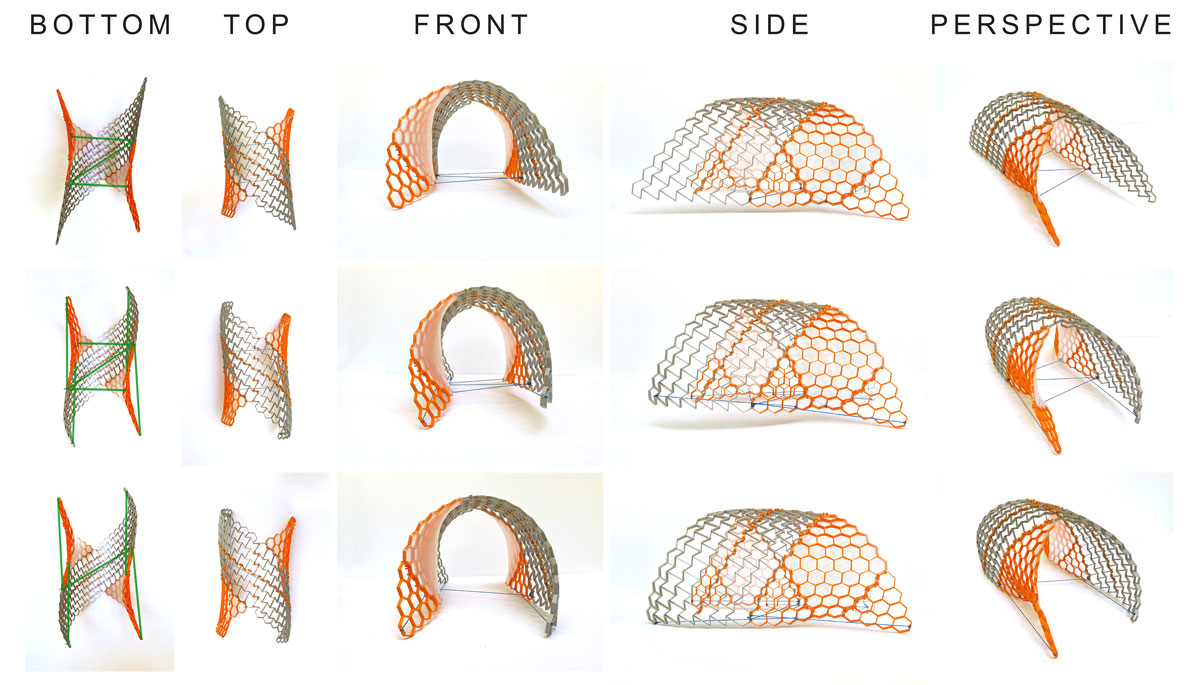The Strapsteel Greenhouse

Duks Koschitz and Che-Wei Wang
Cristina Grimes, BArch ‘20
Anthea Violoria, BArch ‘20
Jiahua Cai, BArch ‘20
Simon Galecki, BArch ‘20
Theodore Hannan, BArch ‘20
Zaixing Huang, BArch ‘20
Herman Lam, BArch ‘20
Risa Mimura, BArch ‘20
Sean Russo, BArch ‘20
Teresa Russo, BArch ‘20
Yiru Shao, BArch ‘20
Mariam Sheikh, BArch ‘20
Ana Vesho, BArch ‘20
Xinyu Xu, BArch ‘20
Ayman Zafar, BArch ‘20
Mathias Kessler,
Riccardo LaMagna,str.ucture Stuttgart
School of Architecture, Undergraduate Architecture

In terms of global carbon emissions, the built environment is a major culprit; and the d.r.a (Center for Design Research in Architecture) aspires to find novel solutions for lightweight structures, since they can have a much smaller footprint than conventional building methods.
If we want to achieve an 8% reduction in emissions by 2030 and follow The Paris Agreement, we have to significantly reduce carbon emissions in the building industry by finding structural systems that are very light and—by implication–low in energy consumption

This project is investigating embedded bending active surfaces, which are extremely light, and then combined with membranes in tension. This means that a surface is produced flat, then bent into a shape by using an extremely efficient membrane.
The system is pre-stressed and can thereby take on architectural loads in a more efficient way. As a proof of concept, these surfaces were used to create the structure for a greenhouse. The finding will be published at the IASS (International Association of Shell Structures).